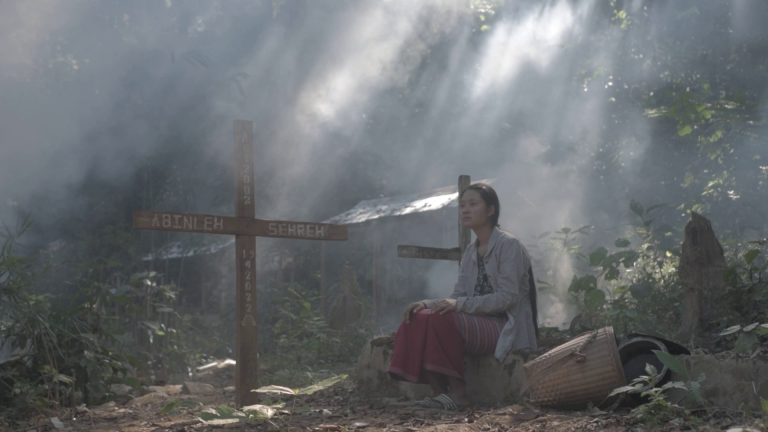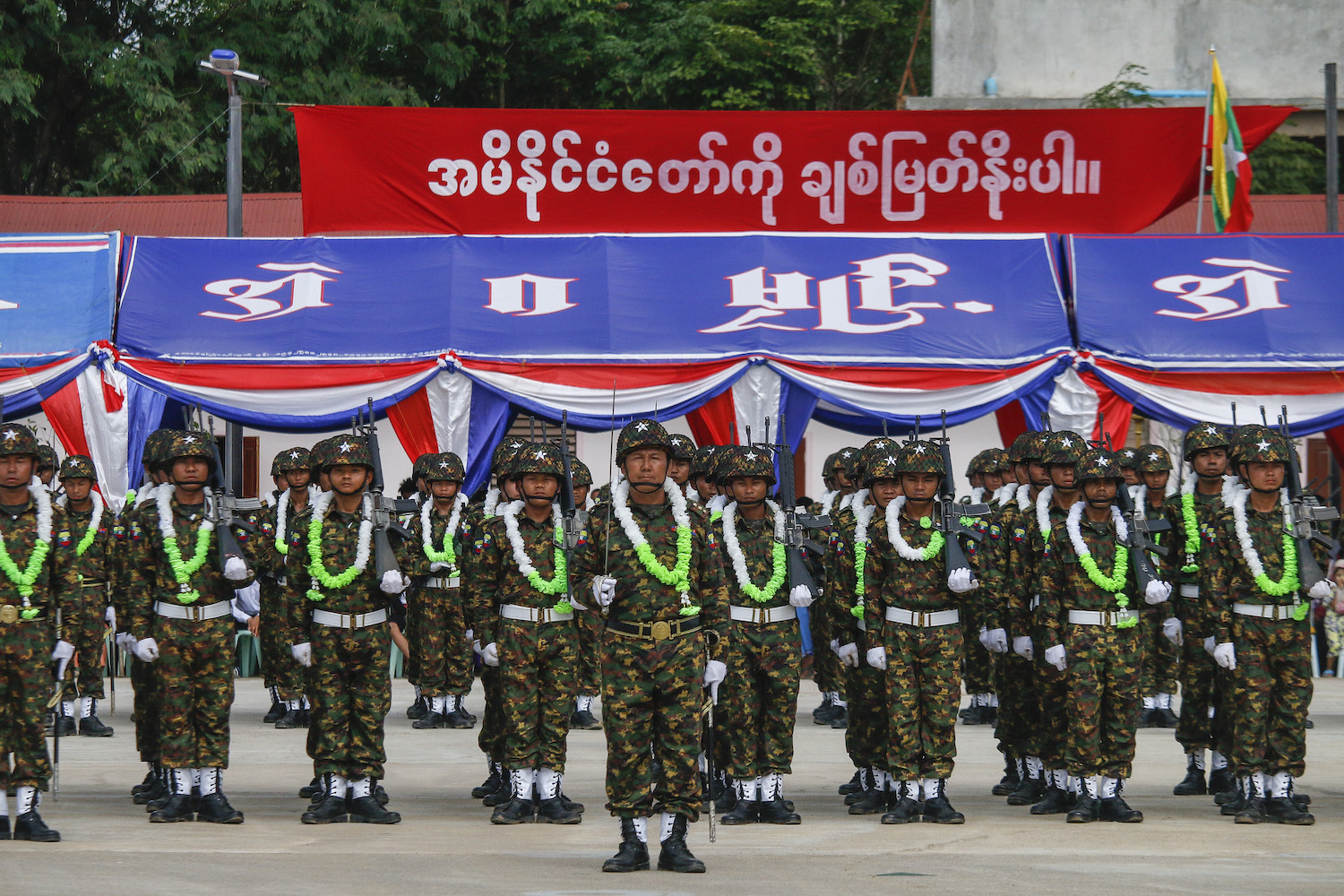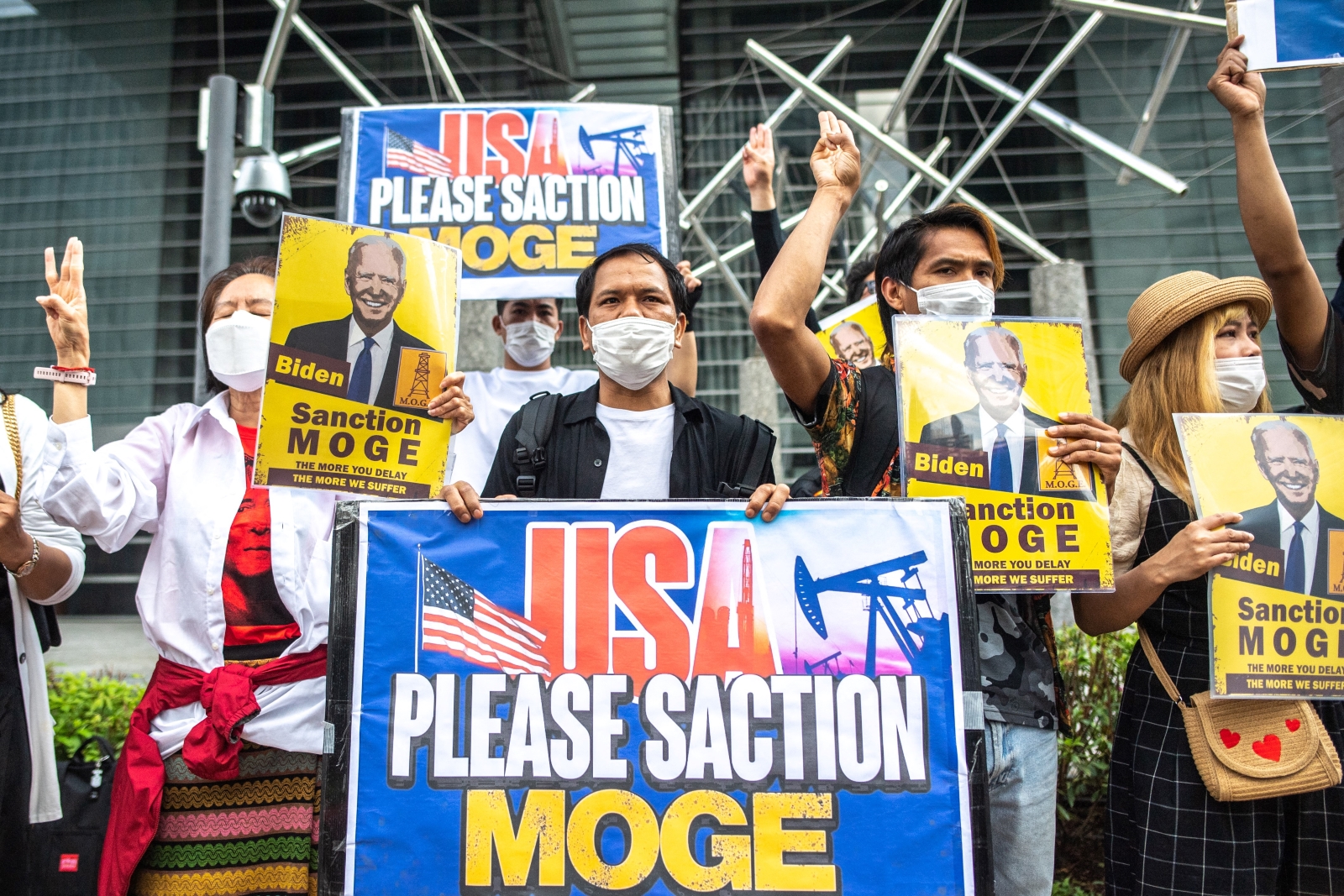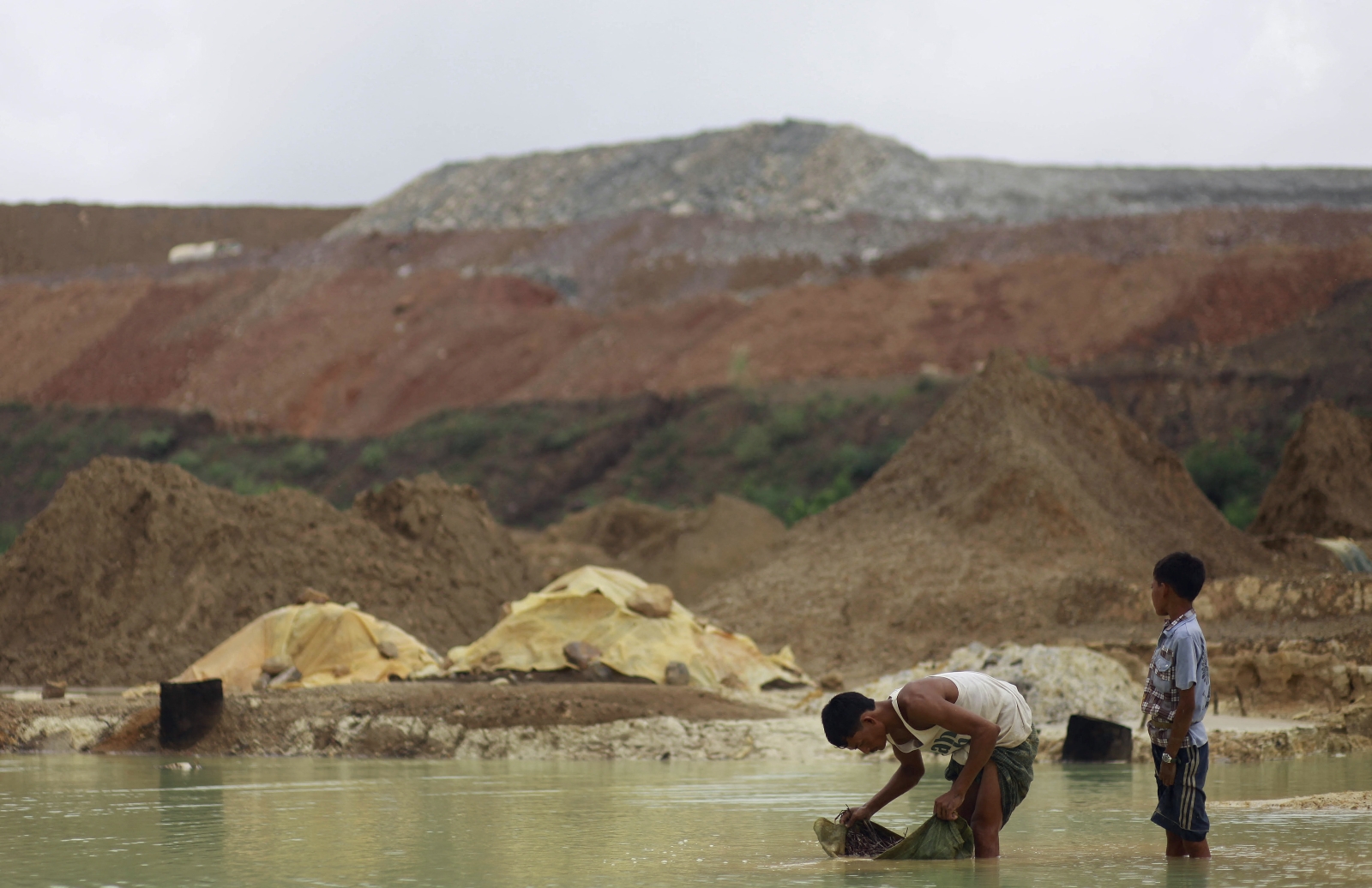OPINION
The United States’ biggest piece of Myanmar legislation in decades may soon begin bearing fruit, but the quirks of the US political system are key to understanding what comes next – and how to influence it.
By MIKE HAACK | FRONTIER
After Kyaw Kyaw Tun* watched the military slaughter his fellow students during the pro-democracy uprising in 1988, he understood nonviolence couldn’t work against the regime. Instead, he thought he could follow the path of independence hero General Aung San – but with a different benefactor.
“He went to Japan for military training. A lot of the Burmese got the same idea,” Kyaw Kyaw Tun told me. “We thought that we would be getting some assistance and training from the US. We heard that there was a US [war] ship in the Indian Ocean. We could go there.”
So Kyaw Kyaw Tun left Yangon, then Rangoon, and joined a small expedition through the jungle and onto a fishing boat that some students had chartered. But the journey took longer than expected and the boat was eventually diverted to Thailand. They never found the American ship, which Kyaw Kyaw Tun had believed was also searching for them. “I don’t know who had those connections. I don’t know if they lied to us,” he said.
Hope, then dismay, about the prospects of US intervention is a common refrain in Myanmar. In 1988, dissidents distributed leaflets informing people that an American invasion was imminent. Some went so far as printing pennants to welcome the GIs, and others dug air raid shelters. The Myanmar military was worried, too. It made frantic calls to the US embassy in an attempt to confirm whether aircraft carrier the USS Coral Sea, which reportedly came within 90 nautical miles of Rangoon, was there to invade.
During the uprising that followed the 2021 coup, protesters called for an invasion under the Responsibility to Protect doctrine. One sign read, “If R2P requires a corpse to enter, come shoot me”. Activists also used Facebook to lobby the US Pacific Fleet.
Adding to the confusion was a tweet by Secretary of State Anthony Blinken that read, “In response to escalating violence in Burma, the United States is designating two officials and two military units today.” He meant that the US had designated two units of the Myanmar military to be sanctioned, but to those not steeped in State Department lingo, it sounded very much like the US was dispatching its military.
The narrative, which at its most distilled is that the US can, and might, save Myanmar, has many benefactors in think tanks and advocacy circles – as well as amongst those in Myanmar’s pro-democracy movement who claim to be the arbiters of US support, or are simply in search of a hopeful story to tell.
One beacon of hope was the passage in December last year of the 2023 National Defense Authorization Act. The law contained within it a revised version of the Burma Unified through Rigorous Military Accountability Act that had earlier failed to pass the US Senate. Known in short as the BURMA Act, it was the first piece of major Myanmar-related legislation to clear Congress in nearly two decades. It was natural, therefore, that it would raise expectations, which in turn would lead to confusion and frustration.
How the sausage is made
Passing this type of bill requires public campaigns, where the messaging is taken up by diverse groups. When I was working with various coalitions to pass the BURMA Act, I tried to keep people interested while managing their expectations, but it wasn’t easy.
While messages need to be straightforward to mobilise large numbers of people, the American government was designed to be anything but. Framer of the US Constitution James Madison argued that “ambition must be made to counteract ambition”, with different branches and departments checking and counteracting each other, so that none gets too powerful. Therefore, in the implementation of the BURMA Act, many pieces are working contrapuntally.
At its simplest, the BURMA Act provides a framework for US policy. It states that the government supports the forces working towards federal democracy and meeting humanitarian needs in Myanmar. To these ends, it authorises crossborder aid, targeted sanctions and nonlethal support to armed resistance groups. But more important than the wording is the political power that it corrals. To get the bill passed, we secured the support of many members of both houses of Congress – the House of Representatives and the Senate. Having put their names on the bill, these members are now invested in seeing it implemented through the congressional oversight of federal agencies.
But for the Act to be successful, it must be funded. Although the programmes outlined in the law draw from different budgets, the easiest to track is the one outlined in the State, Foreign Operations, and Related Programs (SFOPs) appropriations bill.

There are two SFOPs bills up for consideration. These are a Senate version with US$167 million for Myanmar programming including $75 million for cross-border aid, $1.5 million for military deserters and $25 million for nonlethal support to the resistance, and a House version that only recommends $50 million without much direction. Needless to say, we want the Senate version, and luckily, most Washington insiders believe that because the House is in disarray, the Senate bill will likely be adopted wholesale in December.
Then, between the Congress and the ground are a series of agencies. High-level coordination is handled by the National Security Council, which has mostly prioritised the US relationship with its allies in the region, US business interests and humanitarian aid above Myanmar’s resistance movement. Council members justify this by citing geostrategy and the need to work together with Thailand and India to counter China.
The Bureau for Conflict Prevention and Stabilization and its sub-department, the Office of Transition Initiatives, also contribute to big-picture thinking. Staffed by principled bureaucrats who have spent decades working on Myanmar, the problem with them is that revolutions require a leap of faith and they know too much. As Ethiopia has recently demonstrated, ethnic federalism can go horribly wrong, starting with drawing borders along ethnic lines and ending with the question of what to do with people who don’t fit. There’s justifiable concern that this might become the US-sponsored end of Myanmar’s revolution. But more widespread are doubts about the National Unity Government’s claims to control territory and its ability to maintain alliances, as well as its capabilities as Myanmar’s parallel government. They mostly advocate a bottom-up approach, more focused on federalism.
Further down the chain, non-government and quasi-governmental organisations shape the law through its implementation, and here too, a balance between competing interests is baked into this system. Congress funds the National Endowment for Democracy, which in turn funds four main groups: the International Republican Institute, the National Democratic Institute, the Solidarity Center and the Center for International Private Enterprise. In this way, the interests of both major political parties, labour and capital are all accommodated. Recently, IRI has been doing more to promote ethnic movements for self-determination in Myanmar, while NDI has been working more with the NUG. However, the lines are blurred and both organisations are, like others, accused of focusing too much on offering training as opposed to direct aid.
Nonlethal problems
But while these various actors and their priorities will help to determine the law’s impact, implementation will also depend on what’s actually being proposed in the SFOPs bill.
The most controversial, and in my view, misguided, piece of the BURMA Act is the nonlethal support it authorises to active combatants, which may include the shipment of dual-use capacities such as early warning systems. These systems can provide civilians with an advance warning of incoming attacks, saving lives, but can also boost resistance forces’ fighting capabilities by helping them locate and ambush enemy soldiers.
This section of the law was modelled after the US intervention in Syria, where nonlethal aid including body armour and intelligence sharing was soon followed by covert arms shipments. According to people in Washington with direct knowledge of the matter, the section’s framers want to see a similar transition to more lethal aid in Myanmar.
But boosting one faction’s capabilities in a multi-dimensional war is extremely risky. In Syria, some of the arms ended up in the hands of al-Qaeda affiliates, in part because US allies went on to sell them on the black market, and the increased US involvement drew Russia deeper into the fighting. This led to more killing without any of the US’s political objectives being met.
The rationale for such support in Myanmar seems to be that, among resistance forces, the primary problem is a lack of fighting capacity – not that they lack cohesion and have divergent goals. However, if the Senate SFOPs bill passes and nonlethal aid is actively required, implementing agencies seeking to avoid Syria-style pitfalls are going to struggle to figure out who to give it to.
The NUG’s People’s Defence Force is unlikely to receive this support, given its command structure is perceived as chaotic and unaccountable. Local resistance groups that act independently of the NUG are also likely viewed as too unpredictable. Instead, the US will likely favour veteran ethnic armed organisations with records free of drug production, and who are palatable to allies and lack strong ties to China. This makes the Karen Nation Union a likely contender. In the end, the “nonlethal” aid might be as innocuous as funding for the KNU’s health services.
But while the nature and target of this support remain highly uncertain, the BURMA Act’s nudge towards greater sanctions has already produced concrete results. The US imposed its most stringent measures to date – the sanctioning of two state-owned banks – on June 21, the day before the State Department and Treasury had to report their progress on the BURMA Act to Congress. These sanctions also featured prominently in the State Department’s testimony to Congress’s Tom Lantos Human Rights Subcommittee on September 13. If the new measures are determined to have seriously hindered the regime while causing minimal harm to the public, we can expect more to follow.
However, to assess the broader implementation of the BURMA Act, you’d have to track expenditure in a variety of areas. Unfortunately, we don’t yet know how much was spent during the 2023 financial year, which ended on September 30, but a tally should be possible in a few months.
The Chin Baptist lesson
But while implementation is slow and subject to many moving parts, this inefficiency provides activists and interest groups with the opportunity to shape the outcome. Here, lessons can be learned from the passage of the law itself, and the decisive role played by Chin Baptist and Evangelical churches in lobbying for it. Thanks to refugee resettlement programmes, the Chin are one of the largest Myanmar communities in the US, but their real clout comes from belonging to churches that are large, organised and influential.
Corporate consultancies and lobbies play a counteracting role. While advocating for the law, multiple offices told us that US energy giant Chevron had been lobbying for sanctions on oil and gas to be excluded. What we got in the bill – a recommendation, but not requirement, that such sanctions be imposed – was a compromise between what the human rights groups asked for and what was advocated by industry and Thailand, whose state-owned company PTT retains large stakes in Myanmar oil and gas.
Hardnosed calculations about constituents and monied influence contrasts with a lot of the messaging from the movement and US implementing partners. The three prominent resistance leaders Sumlut Gun Maw, Yee Mon, and Min Ko Naing wrote an article for the US Institute of Peace in June arguing that “the resistance’s historic unity for democratic change is worthy of the world’s support”. This “if the Tzar only knew” type of advocacy seems to assume that, if only US leaders knew the righteousness of our cause, they would swing fully behind it. The approach risks obscuring the complex set of considerations that go into American foreign policy in favour of a morality tale. US support isn’t a reward given to the worthy. Good behaviour won’t get it, but organising might.
Thirty-five years after setting off on the doomed mission to find the ship, Kyaw Kyaw Tun now lives in the US. I recently caught up with him over tea, having first met him at a protest against the coup. Since that protest, he met with his Member of Congress and Senators, becoming one of the hundreds of grassroots leaders who helped make the BURMA Act happen. “I do it because it is something I can do,” he said. “I learned my lesson already: If you want something, you have to get it yourself.”
* indicates the use of a pseudonym for security reasons
Mike Haack has been involved in Myanmar advocacy since first visiting the country in 2002, including as the campaigns coordinator for the US Campaign for Burma from 2008-2010. Following the 2021 coup, he worked with the Campaign for New Myanmar and US Advocacy Coalition for Myanmar to pass the BURMA Act. He is currently an advocacy coordinator for the Myanmar Policy Institute. All views expressed here are his own.







